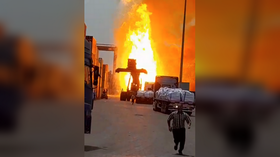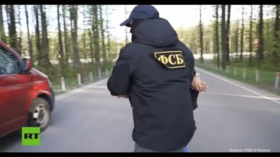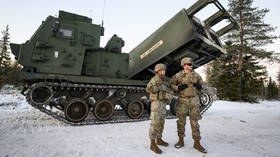Meteor explodes over Siberian city, turning night into day (VIDEO)
People in the Republic of Khakassia in southwest Siberia witnessed a large fireball exploding in the sky on Tuesday, which briefly made the evening as bright as the day. Some even managed to catch the event on camera.
“At first, I couldn’t understand what’s going on. There was a sudden luminescence. It wasn’t as light as day, but still quite bright,” witness Olga Sagalakova told RT.
“We looked at the mountain near us… and there was huge meteor flying above it. It had a tail. Frankly, I was scared. I thought that it was a bomb,” she said.
Night into Day: Meteor explodes over Siberian city (VIDEOS) https://t.co/TdLwrABSmCpic.twitter.com/vMvcdcMmtn
— RT (@RT_com) December 6, 2016
Reports of the rare occurrence came from across Khakassia, as well as from the neighboring Krasnoyarsk Region, local news website xakac.info reports. The event was best seen over the town of Sayanogorsk.
A Khakassia resident, Nikolay Soldatov, said that the meteor “emitted a cold light like a fluorescent lamp.”
“I saw that it was starting to brighten fast. The flash was really bright. It wasn’t blinding, but it was still bright. I looked up and... above the city hospital there was a meteor,” he told RT.
The meteor was seen for three or four seconds and around half a minute later there was a loud bang, triggering car alarms in many parts of the city, the witness said.
“It was very beautiful. You don’t see this every day,” Sergey Isaykin said of the meteor. “But we weren’t scared as we instantly understood that it was something like [what happened] in Chelyabinsk three years ago.”
The apparent meteor burned up high in the atmosphere as little or no blast sound was heard on the ground by most eyewitnesses, the Emergencies Ministry has announced.
Local forums were bombarded with speculation of a possible rocket malfunction or other technological mishaps, but authorities assured locals that the flare was natural and had caused no damage.
If any fragments of the meteor survived the fall, they most likely landed somewhere around the Babik Valley, the regional authorities told TASS, adding that an expedition had been dispatched to the area.
“[The meteor] was several times smaller than the one over Chelyabinsk, but its fragments may be found,” commented Viktor Grokhovsky, professor at the Ural Federal University. “Determining where they landed would require accurate calculation of its path. This may take a day or so.”
"It was probably no more than 10 to 15 meters in diameter, and was made of stone not iron," Natan Eysmont from the Russian Space Research Institute told TASS news agency. "Such meteors, unless they enter the atmosphere at a very sharp angle, are not dangerous."













